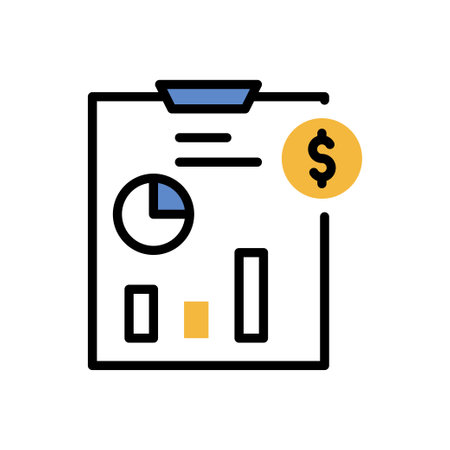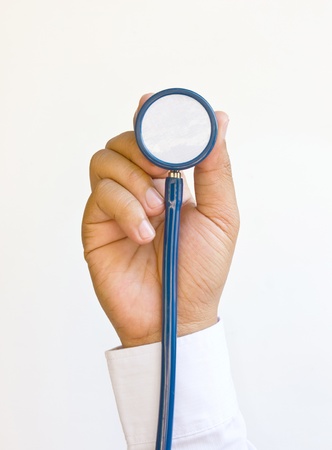Understanding Your Healthcare Costs
Healthcare in the United States can be confusing, especially when it comes to understanding what you actually have to pay. Let’s break down some common healthcare costs you’ll see with American insurance plans, using simple language and real-life examples.
Insurance Premiums
Your premium is the amount you pay each month just to have health insurance. Think of it like a subscription fee, whether you use medical services or not. For example, if your plan has a $400 monthly premium, you pay this every month even if you don’t visit a doctor all year.
Deductibles
The deductible is how much you need to pay out-of-pocket for certain medical services before your insurance starts helping. For instance, if your deductible is $1,500, you must pay that amount for covered services before the insurance company chips in. Some preventive care might be covered before the deductible is met.
Copays
A copay (or copayment) is a fixed dollar amount you pay for specific services like doctor visits or prescriptions. For example, you might pay $25 each time you see your primary care doctor, regardless of the total bill.
Out-of-Pocket Maximums
This is the most money you’d have to pay in one year for covered healthcare expenses. Once you reach this limit through deductibles, copays, and coinsurance (but not premiums), your insurance pays 100% of covered costs for the rest of the year. For example, if your out-of-pocket maximum is $6,000 and you hit that number because of a major illness or accident, you won’t owe any more for covered services until the next year.
Common Healthcare Costs Breakdown
| Term | What It Means | Real-Life Example |
|---|---|---|
| Premium | Monthly fee for having insurance | $400/month paid whether or not you go to the doctor |
| Deductible | Amount paid before insurance starts paying | $1,500 per year out-of-pocket before coverage kicks in |
| Copay | Set fee for certain services or prescriptions | $25 per doctor visit or $10 per prescription fill |
| Out-of-Pocket Maximum | The max youll spend in a year (not counting premiums) | $6,000; after this point, insurance pays 100% |
Understanding these basic terms can help you plan better and avoid surprises when budgeting for your healthcare needs in the U.S.
2. Setting a Realistic Healthcare Budget
Steps to Estimate and Plan for Annual Healthcare Expenses
Managing healthcare costs in the U.S. can feel overwhelming, but breaking it down into smaller steps makes it much more doable. Here’s how you can set a realistic healthcare budget that covers your regular insurance premiums, expected out-of-pocket expenses, and those surprise medical bills that always seem to pop up at the worst times.
Step 1: Calculate Your Insurance Premiums
Start with the basics: your monthly insurance premium. This is the amount you pay each month to keep your coverage active, whether its through your employer, the Marketplace, or another provider. Multiply your monthly premium by 12 to get your yearly total.
Example Table: Annual Insurance Premium Calculation
| Monthly Premium | Months | Annual Premium Cost |
|---|---|---|
| $300 | 12 | $3,600 |
Step 2: Estimate Out-of-Pocket Costs (Deductibles & Copays)
Your deductible is the amount you pay before your insurance starts to help. Add in typical copays for doctor visits and prescriptions you expect throughout the year. Review last year’s expenses or check your insurance plan’s summary of benefits if you’re not sure where to start.
Example Table: Estimated Yearly Out-of-Pocket Costs
| Type of Expense | Estimated Annual Amount |
|---|---|
| Deductible | $1,500 |
| Copays (office visits, prescriptions, etc.) | $600 |
| Total Expected Out-of-Pocket Costs | $2,100 |
Step 3: Plan for Surprises (Emergency Fund)
No matter how well you plan, unexpected medical bills can happen—think ER visits or sudden specialist appointments. It’s smart to set aside some extra money just in case. Many Americans aim for at least $500–$1,000 as a medical emergency fund.
Example Table: Building a Medical Emergency Fund
| Savings Goal Per Month | Months Saved For | Total Emergency Fund Saved Annually |
|---|---|---|
| $50 | 12 | $600 |
| $100 | 12 | $1,200 |
Add It All Up: Your Total Healthcare Budget for the Year
Tally everything together—your annual premiums, estimated out-of-pocket costs, and emergency fund savings—to see the full picture of what you should budget for healthcare each year. Reviewing this once or twice a year helps you stay on track and avoid nasty surprises down the line.

3. Comparing and Choosing Health Insurance Plans
Understanding Your Options
When it comes to picking a health insurance plan in the U.S., you usually have three main routes: plans from your employer, plans from the federal Marketplace (Healthcare.gov), or private insurance. Each path has its pros and cons, so its important to find what works best for your health needs and budget.
Key Factors to Consider
Monthly Premiums vs. Out-of-Pocket Costs
The monthly premium is what you pay each month just to keep your coverage active. But dont stop there—deductibles, copays, and coinsurance can really add up when you actually use your insurance. Sometimes a low premium means youll pay more later when you need care.
| Feature | Employer Plan | Marketplace Plan | Private Plan |
|---|---|---|---|
| Who Qualifies? | Usually full-time employees | Anyone (based on income/household) | Anyone (no income restrictions) |
| Premium Cost | Often lower (employer pays part) | Varies; subsidies may help lower cost | Can be higher; no subsidies |
| Provider Network | Usually local/regional | Diverse options (state dependent) | Varies widely by plan/company |
| Flexibility if You Move/Change Jobs? | No, coverage often ends with job change | Yes, portable across states in many cases | Yes, but must update info if moving states |
| Covers Pre-Existing Conditions? | Yes (by law) | Yes (by law) | Depends on plan (ACA-compliant plans do) |
| Add-ons like Dental/Vision? | Sometimes included or optional add-on | Add-on options available separately | Add-on options available separately |
Your Health Needs Matter
If you go to the doctor a lot or take regular prescriptions, look for plans with lower deductibles and copays—even if the monthly premium is higher. If you’re healthy and rarely visit the doctor, a high-deductible plan could make sense since your monthly costs will be lower.
Your Family Situation Counts Too
If you need coverage for dependents, compare family plan costs. Some employers offer better rates for families than Marketplace or private plans. Check out which doctors and hospitals are in-network too—especially important if you already have favorite providers.
Navigating the Federal Marketplace (Healthcare.gov)
The Marketplace lets you compare plans side-by-side, see prices after any tax credits, and check what’s covered before enrolling. You’ll enter details about your household size, income, and location to get personalized quotes.
- Bronze Plans: Lowest premiums, highest out-of-pocket costs.
- Silver Plans: Middle ground; eligible for extra savings if you qualify.
- Gold/Platinum Plans: Higher premiums but lower out-of-pocket costs—good if you expect more medical care.
Tips When Comparing Plans:
- Check prescription drug coverage for your medications.
- If you travel often, make sure you’re covered out-of-state.
- If specific doctors or clinics matter to you, confirm they’re in-network.
Your Budget: What Can You Afford Monthly—and Unexpectedly?
Create a simple budget to see what’s realistic each month—not just for premiums but also potential deductibles and copays if something unexpected happens. This way, medical bills don’t catch you off guard down the road.
The Bottom Line: Match Your Plan to Your Life Stage and Needs
The right insurance plan is personal. Take time to think about how much medical care you need each year, who needs coverage in your household, your preferred doctors/hospitals, and how much financial risk youre comfortable with. Balancing these factors will help you choose a plan that supports both your health and your wallet as you deal with healthcare costs in the U.S.
4. Building an Emergency Medical Fund
Why You Need an Emergency Medical Fund
Even with good insurance, unexpected medical bills can pop up—think ER visits, surprise surgeries, or out-of-network charges. Having a dedicated emergency medical fund gives you peace of mind and helps you avoid racking up credit card debt when health issues arise.
How Much Should You Save?
A good rule of thumb is to save at least the amount of your insurance deductible plus some extra for potential out-of-pocket costs. For most Americans, aiming for $1,000–$2,500 is a smart starting point, but the right amount depends on your health plan and family needs.
Sample Emergency Medical Fund Goals
| Insurance Deductible | Recommended Emergency Fund |
|---|---|
| $500 | $1,000–$1,500 |
| $1,500 | $2,000–$3,000 |
| $2,500+ | $3,000–$5,000 |
Where to Keep Your Medical Savings
The best place to stash your emergency medical fund is somewhere safe and easy to access—but not too easy to spend. Here are some smart options:
| Account Type | Pros | Cons |
|---|---|---|
| Savings Account (at your bank) | FDIC-insured; easy access; earns some interest; separate from checking account | Interest rates are typically low; temptation to dip into funds for non-medical expenses |
| High-Yield Online Savings Account | Higher interest rates; FDIC-insured; can be kept separate from daily spending accounts | Takes a day or two to transfer funds to your checking account when needed |
| Health Savings Account (HSA)* | Tax benefits; grows tax-free if used for qualified medical expenses; portable between jobs/plans | You must have a high-deductible health plan (HDHP) to qualify; penalties if withdrawn for non-medical use before age 65 |
*If eligible, using an HSA is one of the best long-term strategies for managing healthcare costs in the U.S.
Easy Steps to Start Your Fund Today
- Open a dedicated savings account: Keep it separate from your main checking account so you’re not tempted to spend it.
- Set up automatic transfers: Even $25 or $50 per month adds up over time.
- Add windfalls: Tax refunds, bonuses, or birthday money can give your fund a quick boost.
- Track your progress: Check your balance every few months and adjust your goal as your healthcare needs change.
5. Handling Surprise Medical Bills
Understanding Surprise Medical Bills
Surprise medical bills happen when you get unexpected charges after receiving care, often because a provider or service was out-of-network—even if you went to an in-network hospital. These bills can be stressful, but there are ways to handle them smartly and protect your wallet.
Practical Tips for Negotiating and Reducing Unexpected Charges
- Don’t Panic—Check the Bill: Review every bill for errors. Common mistakes include double billing, incorrect codes, or services you didn’t receive.
- Request an Itemized Bill: Ask your provider for a detailed breakdown of each charge. This makes it easier to spot mistakes and question unnecessary fees.
- Contact Your Insurance: Call your insurance company to verify why certain charges weren’t covered. Sometimes claims are denied by mistake and can be reprocessed.
- Negotiate With Providers: If a charge is legitimate but too high, ask the billing department if they offer discounts or payment plans. Many hospitals are willing to reduce fees if you pay promptly or demonstrate financial hardship.
Appealing Surprise Bills: Steps You Can Take
- File a formal appeal with your insurance company if you believe a service should have been covered.
- Ask your doctor to write a letter supporting the necessity of the treatment or explaining why you couldn’t avoid out-of-network care (for example, in emergencies).
- If your appeal is denied, escalate it by contacting your state’s Department of Insurance or the Consumer Assistance Program.
Your Rights Under American Patient Protections
The No Surprises Act, which took effect in 2022, protects patients from most surprise bills for emergency services and some non-emergency services at in-network hospitals. Here’s how it helps:
| Situation | Your Protection |
|---|---|
| Emergency Room Visit (Out-of-Network) | You pay only your in-network cost-share. No extra balance billing allowed. |
| Non-Emergency Care at In-Network Hospital (But Out-of-Network Doctor) | No surprise bills—providers can’t charge more than in-network rates unless you consent in advance. |
Resources for Help
- Contact your state’s Department of Insurance for help with appeals.
- The Consumer Financial Protection Bureau (CFPB) offers guidance on medical debt collection rights.
- The Centers for Medicare & Medicaid Services (CMS No Surprises Help Desk) provides support for issues related to the No Surprises Act.
Quick Action Checklist
- Review all bills and EOBs (Explanation of Benefits)
- Contact provider and insurer quickly if something looks wrong
- Use available patient protections and file appeals as needed
Being proactive about surprise medical bills can save you money and stress. Know your rights, use available resources, and don’t hesitate to negotiate or appeal when something doesn’t seem right.
6. Utilizing Tax-Advantaged Accounts
What Are HSAs and FSAs?
When it comes to managing healthcare costs in the U.S., Health Savings Accounts (HSAs) and Flexible Spending Accounts (FSAs) are two powerful tools that can help you save money. These accounts let you set aside pre-tax dollars for qualified medical expenses, which means more of your money goes directly toward your healthcare needs instead of taxes.
How Do HSAs Work?
An HSA is available if you have a high-deductible health plan (HDHP). You put money into your HSA before taxes are taken out, which lowers your taxable income. The best part? The money grows tax-free and you can withdraw it tax-free for qualified medical expenses—everything from doctor visits to prescriptions and even some over-the-counter meds. Plus, unused funds roll over year after year and the account stays with you even if you change jobs or health plans.
Main Features of an HSA:
| Feature | Description |
|---|---|
| Eligibility | You must have a high-deductible health plan (HDHP) |
| Contribution Limits (2024) | $4,150 for individuals, $8,300 for families |
| Tax Benefits | Contributions are pre-tax, earnings grow tax-free, withdrawals for qualified expenses are tax-free |
| Rollover | Unused funds roll over each year—no “use it or lose it” rule |
| Portability | The account stays with you even if you change jobs or insurance plans |
How Do FSAs Work?
An FSA is usually offered by employers as part of your benefits package. Like an HSA, you contribute pre-tax dollars to cover things like copays, prescriptions, dental care, vision expenses, and more. Unlike HSAs, FSAs generally require you to use the money within the plan year—though some plans offer a short grace period or allow you to roll over a small amount.
Main Features of an FSA:
| Feature | Description |
|---|---|
| Eligibility | Offered through employer benefit plans; no HDHP required |
| Contribution Limits (2024) | $3,200 per employee per year (set by IRS) |
| Tax Benefits | Contributions are pre-tax; spend on qualified medical expenses tax-free |
| Rollover/Grace Periods | Most funds must be used within the plan year; some plans allow up to $640 rollover or 2.5-month grace period to use remaining funds |
| Portability | You lose access if you leave your job or switch employers unless you opt for COBRA continuation coverage |
How Can HSAs and FSAs Save You Money?
The biggest advantage of these accounts is their tax savings. By using pre-tax dollars for medical expenses, you effectively lower your taxable income and keep more money in your pocket. For example, if you’re in the 22% tax bracket and put $2,000 into an HSA or FSA, that’s $440 less in federal taxes owed. Plus, HSAs give you the flexibility to save for future medical needs since unused funds roll over indefinitely.
Quick Comparison: HSA vs. FSA at a Glance
| HSA | FSA | |
|---|---|---|
| Who’s Eligible? | People with HDHPs only | Anyone with employer-offered plan; no HDHP needed |
| Annual Contribution Limit (2024) | $4,150 individual / $8,300 family | $3,200 per employee |
| Funds Roll Over? | Yes – forever | No – usually must spend within plan year |
| Tied to Employer? | No – portable | Yes – not portable |
Takeaway: Use Your Benefits Wisely!
If you’re trying to manage premiums, deductibles, and unexpected medical bills, taking full advantage of HSAs or FSAs can be a game-changer for your budget. Check with your employer’s HR department or health insurance provider to see which options are available to you and make sure to maximize your contributions if possible.


